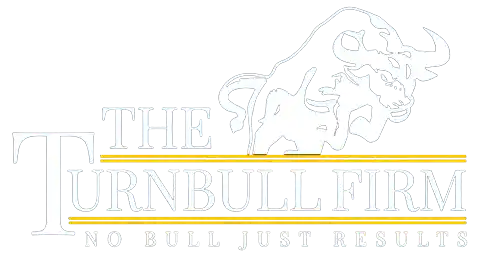Understanding Cerebral Palsy: Causes, Symptoms and Treatment
We hope you find this Nursing Home Neglect Blog Article both Helpful and Informative.
Birth Injury and Cerebral Palsy: The Connection
Cerebral palsy is a set of neurological disorders that impact muscle control and movement. It can cause difficulty with posture and coordination too. Cerebral palsy occurs when there is damage to the developing brain, either during or near the time of birth. Understanding the link between birth injury and cerebral palsy can shed light on various factors that contribute to this condition’s development.
Various factors have been identified as potentially leading to brain injury and the onset of cerebral palsy, including ataxic cerebral palsy, asphyxia, severe jaundice, and infections. Pregnancy and birth factors associated with increased cerebral palsy risk include low birth weight, premature birth, and delivery complications.
Healthcare providers play a significant role in preventing cerebral palsy by monitoring fetal distress during birth, responding to the mother’s risk factors, and providing adequate medical care.
Types of Birth Injuries
There are several types of birth injuries that can cause cerebral palsy. Some examples include:
- Asphyxia: a condition characterized by a lack of oxygen to the baby’s brain, which can potentially result in brain damage and cerebral palsy.
- Brain hemorrhage: bleeding within the brain, which can lead to severe neurological damage and potentially cerebral palsy.
- Head trauma: physical force applied to the head during childbirth, which can result in cerebral palsy.
Each of these birth injuries affects different areas of the brain and can result in varying symptoms of cerebral palsy. Recognizing the specific nature of the child’s birth injury and the ensuing brain damage assists in devising the most suitable treatment and intervention for the child.
Timing of Brain Damage
The timing of brain damage can significantly affect the severity and type of cerebral palsy a child may develop. Brain damage can occur during labor and delivery, in the late stages of pregnancy, or it may not be immediately apparent and only become noticeable months or even years later. The earlier the brain damage occurs, the more severe the symptoms and form of cerebral palsy are likely to be.
For example, if abnormal brain development occurs due to brain damage prior to birth, the child may experience more severe symptoms and a more severe form of cerebral palsy. Conversely, if the brain damage occurs during labor and delivery, the child may experience milder symptoms and a milder form of cerebral palsy.
This underscores the need to comprehend the timing of brain damage to more accurately forecast potential outcomes and shape treatment strategies.
Recognizing the Signs and Symptoms
Early intervention and treatment for cerebral palsy rely on accurate detection of its signs and symptoms. Cerebral palsy is associated with difficulties in movement and coordination, speech and eating, development, and other associated issues. There are four primary types of cerebral palsy:
- Spastic
- Dyskinetic
- Ataxic
- Mixed
Each type has varying degrees of severity ranging from mild to more severe cases.
Some complications associated with spastic cerebral palsy can include muscle weakness, muscle spasticity, and coordination issues. These complications arise when cerebral palsy is caused by brain damage or other factors.
Observing a child’s cerebral palsy development and seeking medical assistance is important when cerebral palsy signs appear, as timely intervention can significantly enhance the child’s quality of life.
Risk Factors for Birth Injury-Related Cerebral Palsy
Knowing the risk factors for birth injury-related cerebral palsy aids in preventing brain damage and the condition’s development. Some risk factors include:
- Maternal infections
- Premature birth
- Low birth weight
- Delivery complications
These factors are associated with an increased risk of brain damage and cerebral palsy development. Some infections known to be associated with cerebral palsy include rubella (German measles) and cytomegalovirus (CMV).
Delivery Complications
Delivery complications can significantly increase the risk of cerebral palsy. These complications include:
- Head trauma during childbirth
- Delayed birth of more than 18 hours
- Premature delivery
- Umbilical cord issues
- Detachment of the placenta
- Uterine rupture
- Lack of oxygen to the brain during labor or delivery
These complications can result in restricted blood flow to the baby’s brain due to the pinching or detachment of the umbilical cord, leading to a reduced supply of oxygen and nutrients to babies born with this condition.
Prompt and effective management of delivery complications is vital in reducing the risk of cerebral palsy. Healthcare providers should be aware of the potential risks and take appropriate measures to ensure the safety of both mother and baby during childbirth.
Key steps to reduce the risk of cerebral palsy include:
- Early identification of complications
- Prompt intervention and treatment
- Close monitoring of the baby’s condition during and after delivery
- Collaboration between healthcare professionals to provide comprehensive care
By following these steps, the likelihood of brain damage and the development of mild cerebral palsy or other forms of cerebral palsy can be significantly decreased.
Diagnosis and Assessment
The diagnosis and assessment of cerebral palsy entail:
- A comprehensive look at the child’s medical history
- Conducting tests to ascertain the type and extent of brain damage
- Evaluating the condition’s severity
This process helps healthcare providers identify the appropriate treatment options and interventions for the child.
Cerebral palsy diagnosed in a child is typically based on a combination of medical history, observations of the child’s symptoms and development, and advanced tests like CT and MRI scans. These tests can help identify the specific type of brain damage and its origin, providing valuable information for guiding treatment plans.
Confirming the Cause
Confirming the cause of cerebral palsy may require advanced tests, such as CT and MRI scans, to identify the specific type of brain damage and its origin. These tests can provide detailed images of the brain, allowing healthcare providers to pinpoint the affected regions and determine the underlying cause of the child’s cerebral palsy.
Parents and healthcare providers need to work together during the diagnostic process, sharing information and observations about the child’s development and symptoms. A comprehensive understanding of the child’s medical history and the results of these advanced tests can help confirm the cause of cerebral palsy and inform the most appropriate treatment options.
Evaluating the Severity
To assess the severity of cerebral palsy, it’s necessary to evaluate the child’s motor skills, cognitive abilities, and overall quality of life. This helps in determining the most appropriate treatment options. This may include conducting hearing, vision, speech, and intellectual tests to assess any developmental delays and observe the child’s muscles and motor skills.
The evaluation process helps healthcare providers develop a comprehensive treatment plan tailored to the child’s specific needs and abilities. This can include:
- Physical therapy
- Occupational therapy
- Speech therapy
- Medications
- Surgery
The specific treatments recommended will depend on the severity of the child’s condition and the specific challenges they face.



